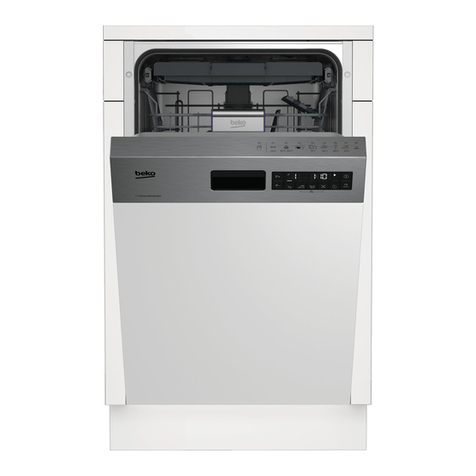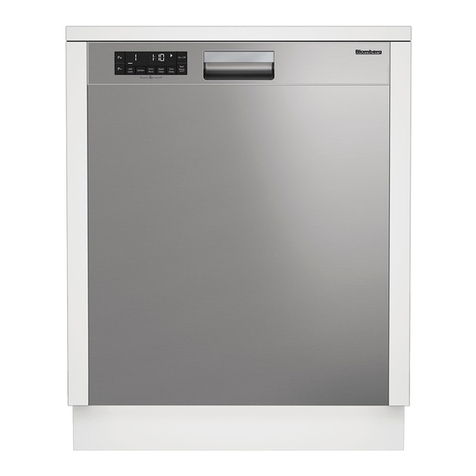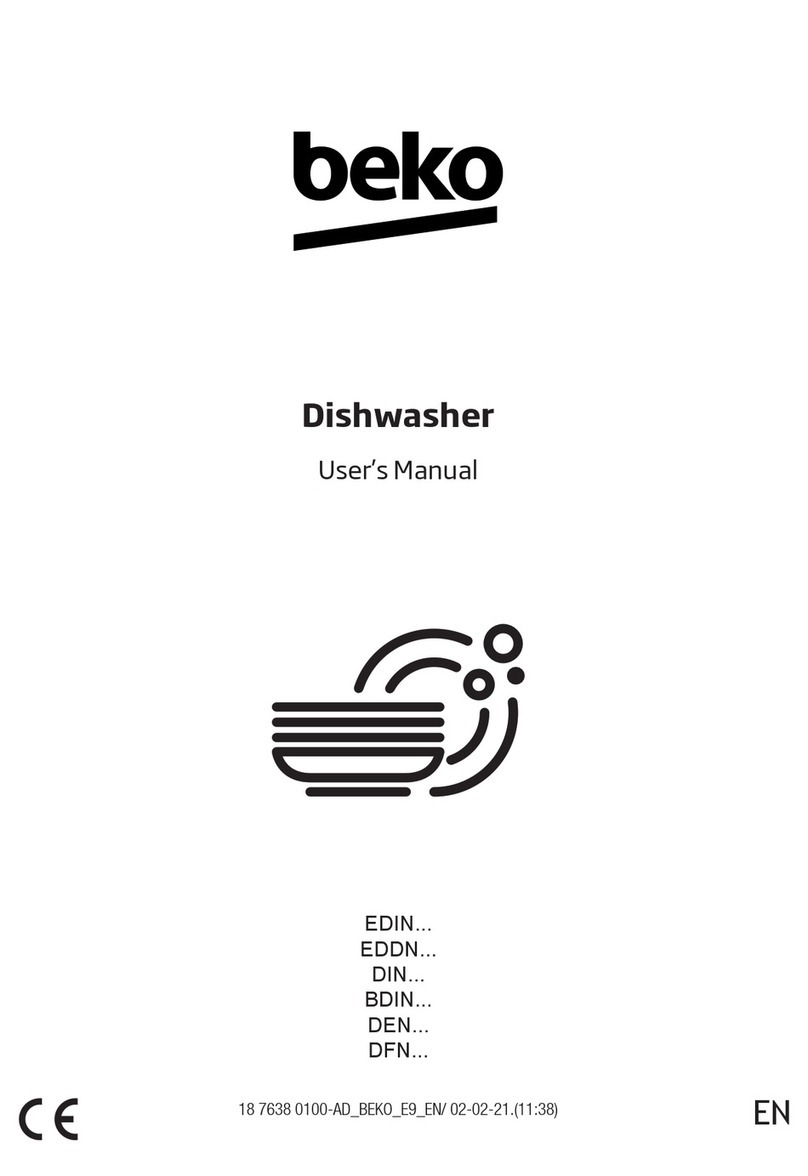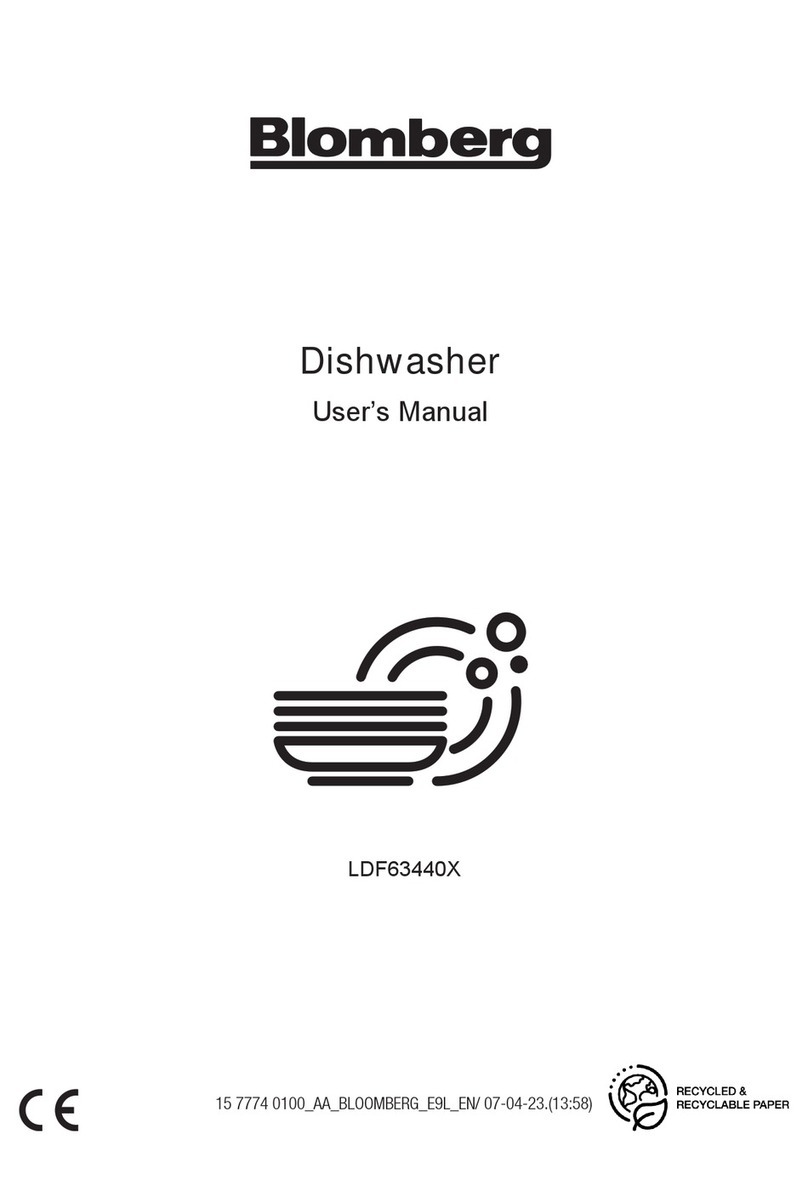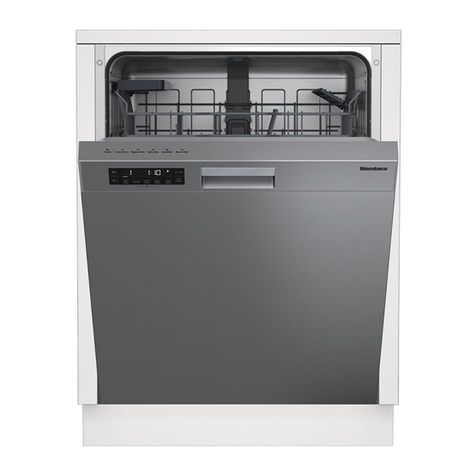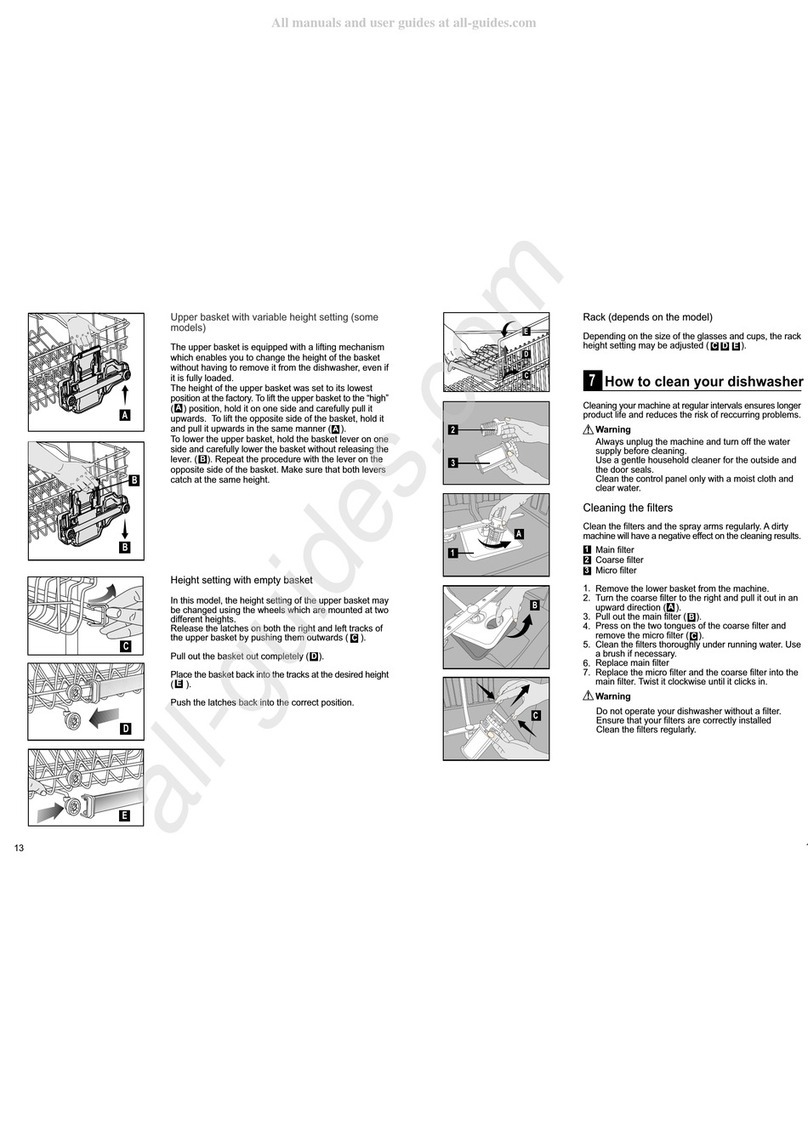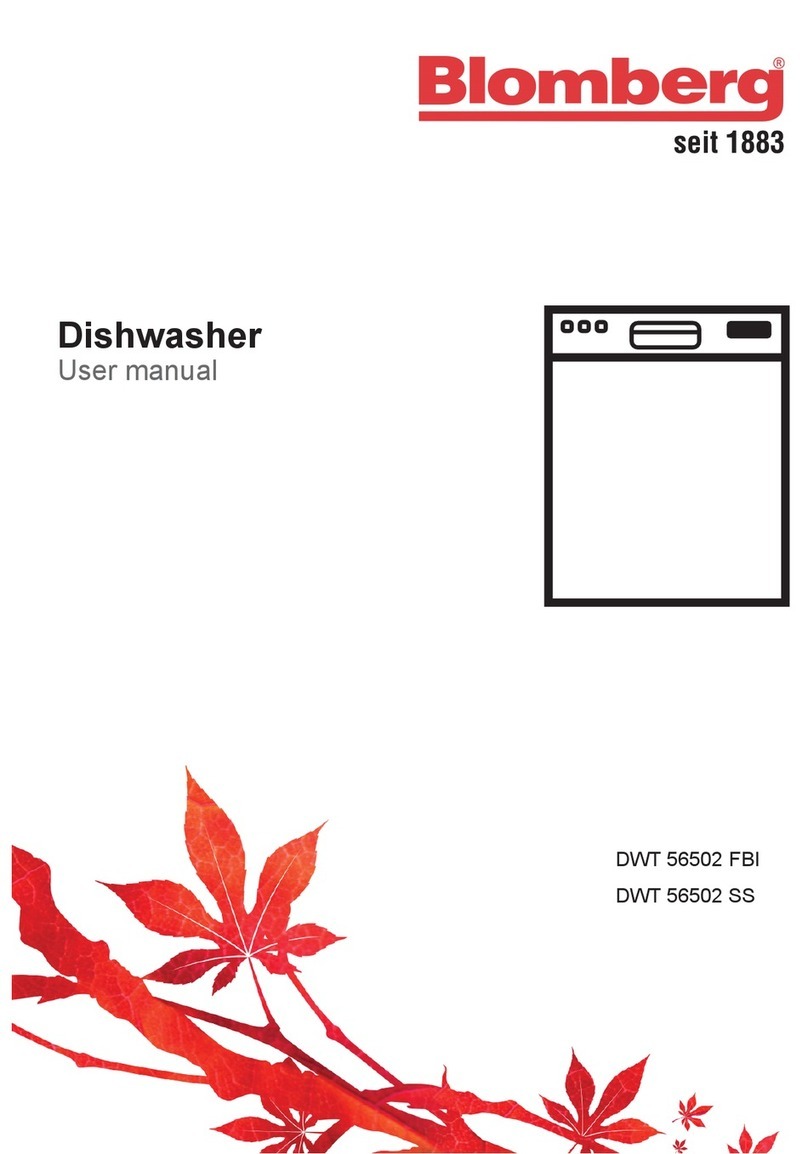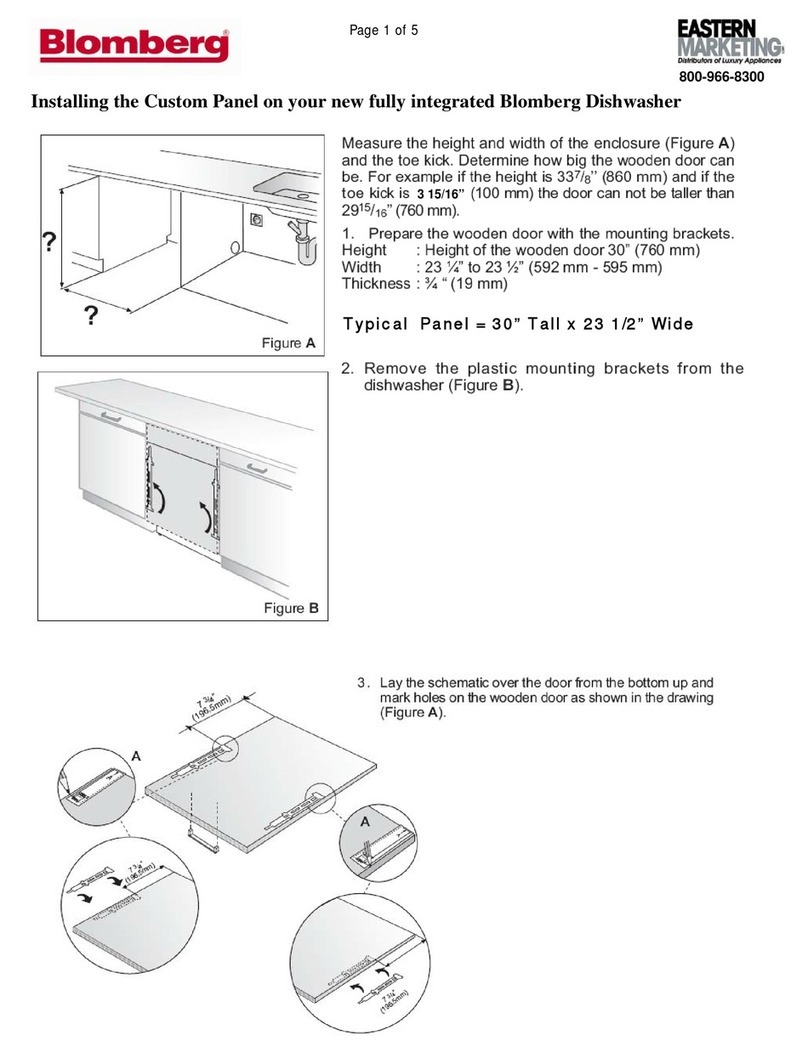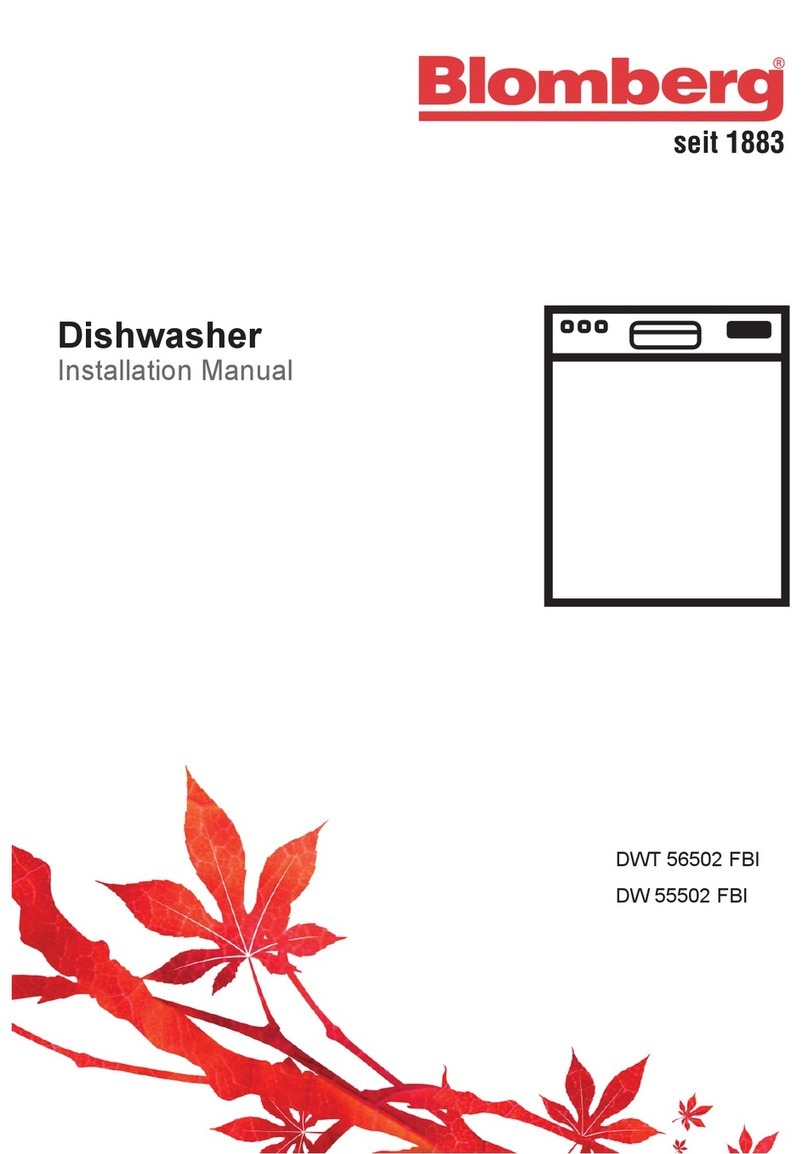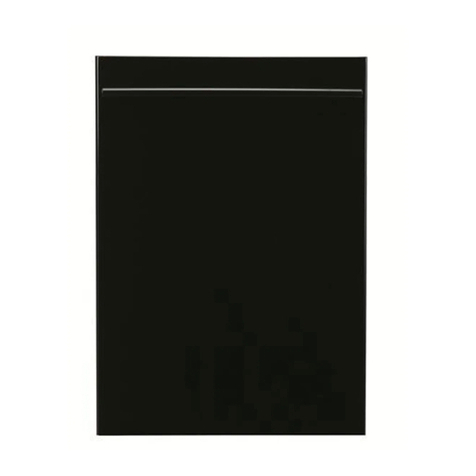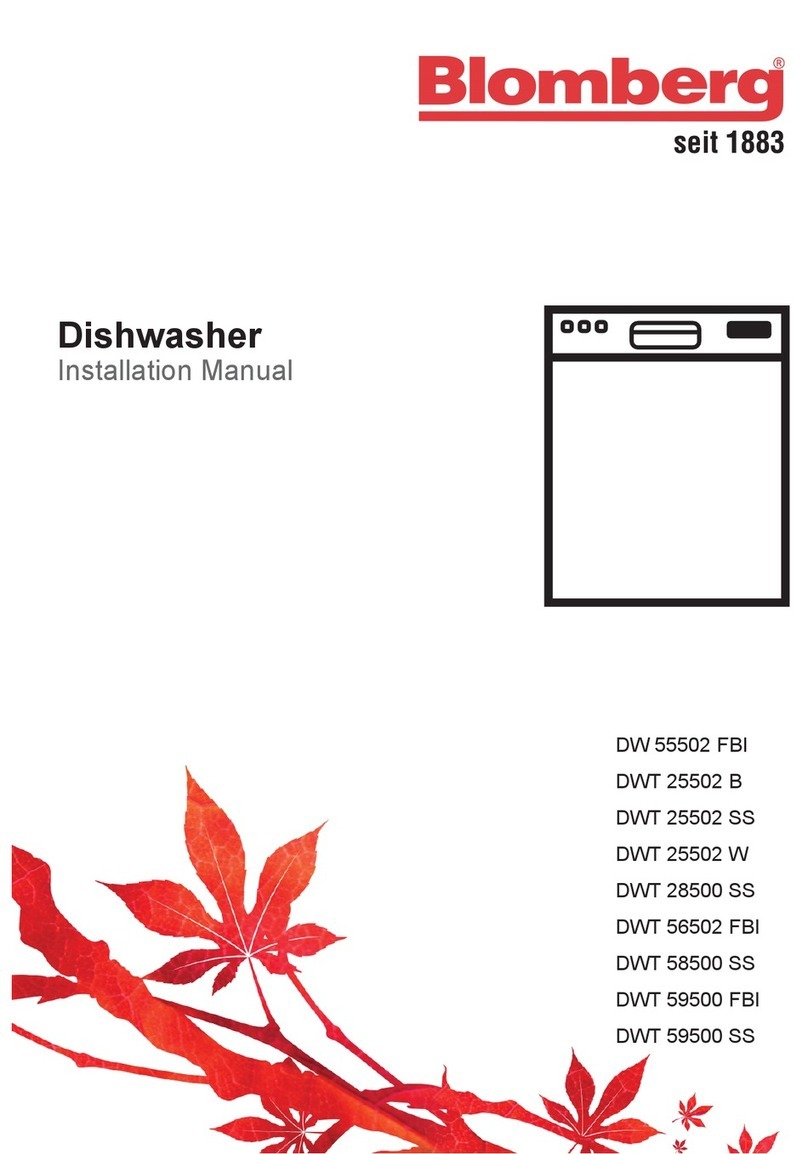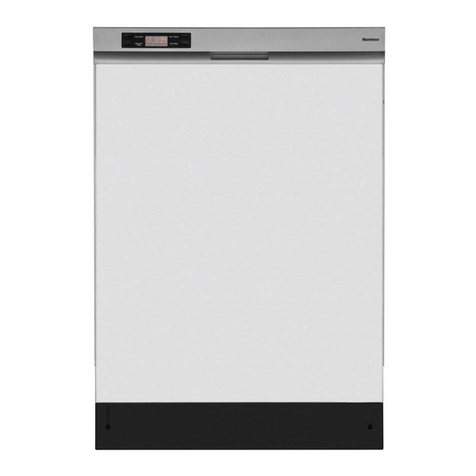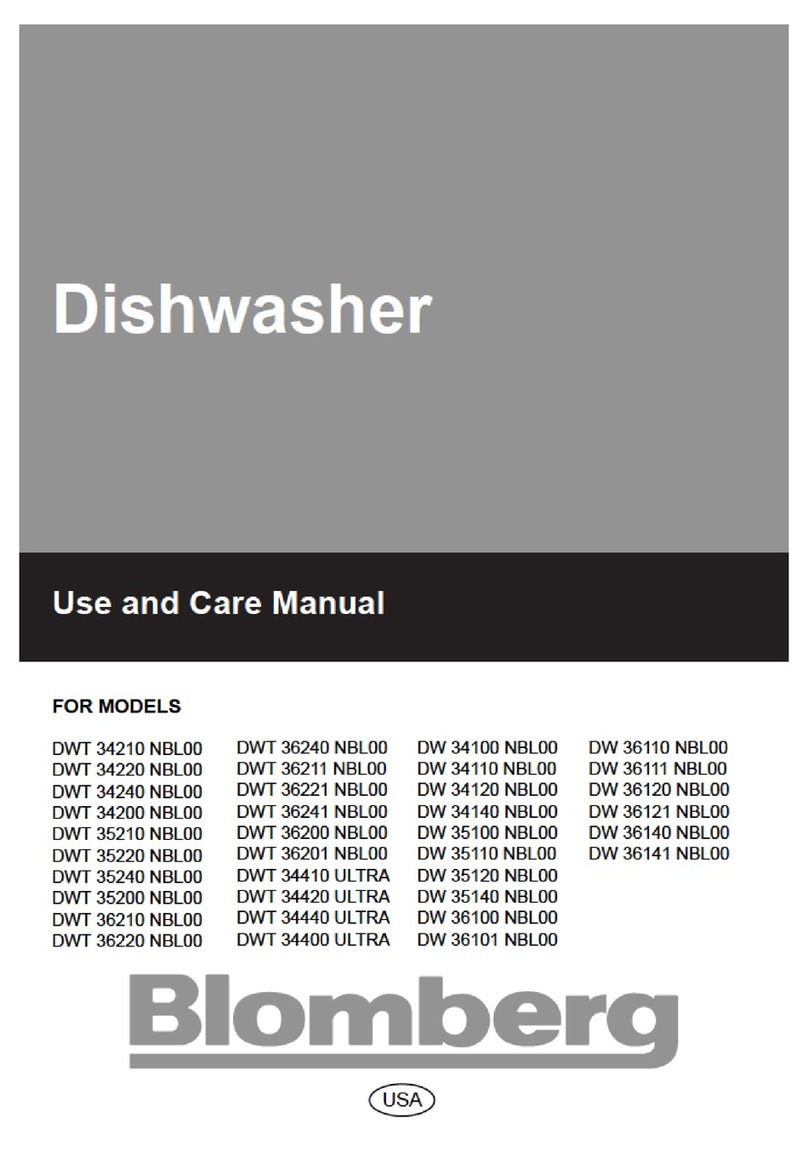918
Possible causes
- The lid of the salt container is not
closing properly
- The hardness is not selected
properly; too little salt is being
used
- Salt loss
Possible causes
- Smell of new machine
- Filters are dirty
- Dishes stand in the machine for a
few days without being washed
Possible causes
- Excessive use of detergent when
water hardness is low, cleaning
temperature is too high
Detergents
There are 3 types of detergents:
1. Phosphate and containing chlorine
2. Phosphate containing no chlorine
3. Neither containing phosphate nor chlorine
The new compact powders are normally phosphate free. As phosphates have water softening
properties we suggest you add salt to the salt container even if the hardness of your water
is only 6°dH. In hard water areas if a phosphate free detergent is used white marks on the
dishes and glasses may be observed. It may be prevented by increasing the amount of
detergent. Detergents without chlorine have less bleaching effect. Coloured stains may not
be fully removed. Choose a programme with a higher wash temperature.
Attention
Always store your detergents in locations which are cool, dry and out of the reach of children
Pour the detergent into the detergent dispenser before turning the machine on
Too much detergent may mean that the detergent does not dissolve properly and dishes are
scratched
T O-IN-ONE AND THREE-IN-ONE DETERGENTS
You will obtain the best results from your dishwasher if you use a separate detergent rinse
aid and water-softening salt.
Detergent manufacturers also produce combined detergents known as two-in-one and three-
in-one.
Three-in-one: These products contain detergent rinse aid and water-softening salt.
Two-in-one: These products contain detergent and either rinse aid or water-softening salt.
In general you will obtain satisfactory results from combined detergents only under specific
usage conditions. These detergents contain predetermined amounts of rinse aid and/or softening
salt. This means that you cannot adjust the amount of water-softening salt and rinse aid that
you use to suit the water hardness level in your home.
You should bear the following points in mind when using such detergents:
- Be sure to check the specifications of the product you are using and whether it is a combined
product or not.
- Follow the instructions on the packet when using these products.
- The use of these products at the correct appliance settings will ensure economical
use of salt and/or rinse aid.
- If the detergent is in tablet form never place these in the internal section or cutlery basket
of the dishwasher. Always place the tablets in the detergent dispenser of the detergent holder.
Using three-in-one detergent: detergent, softening salt and rinse aid
- These detergents will not give you the same drying performance that you can obtain by using
separate detergent salt and rinse aid. To increase the drying performance:
Put your appliances rinse aid setting at 1 and apply rinse aid. When the rinse aid is used
up add more rinse aid to the rinse aid dispenser.
- If you use combined detergents with a rinse aid setting higher than 1 contact with the hands
may leave rainbow-coloured water stains on the washed items and inside the machine.
- If you use combined detergents without adding salt lime scale may form especially on
glasses. To avoid lime scale formation:
Put your appliances water softener setting at 1 and add salt. When the salt is used up
add more salt to the water softener.
Using two-in-one detergent: detergent and softening salt
- These detergents do not contain rinse aid so you need to use the rinse aid setting as
described in the manual making sure that there is rinse aid in the rinse aid dispenser with
every wash and that you refill the rinse aid dispenser with rinse aid every time it is empty.
Using two-in-one detergent: detergent and rinse aid
- These detergents will not give you the same drying performance that you can obtain by
using separate detergent salt and rinse aid. To increase the drying performance:
Smell
Rust stains, destruction
of the surface
How to fix these problems
- Salt can destroy metal surfaces and cause rust damage
- Check whether the lid of the salt container is firmly closed
Use the funnel to pour in special salt Begin the pre-wash
programme right after filling in salt After the program is
complete, check whether the lid may have loosened
Milky appearance or blue
shimmering deposit on the
glasses (glass corrosion)
- Check the set values with the stated values from the local
water board
- Check whether the lid of the salt container is firmly closed
Use the funnel to pour in special salt Begin the pre-wash
programme right after filling in salt After the program is
complete, check whether the lid may have loosened
How to fix these problems
- The smell of a new machine disappears after a few washing
runs
- Clean all strainers and filters as described in the manual
- Remove coarse dirt under running water and carry out the
pre-wash program with an interval of 2 days without a
detergent Close the door to avoid the development of
smells
How to fix these problems
- Choose a programme with a low temperature and add a
smaller amount of detergent Check the set water hardness
against the stated values from the local water board
